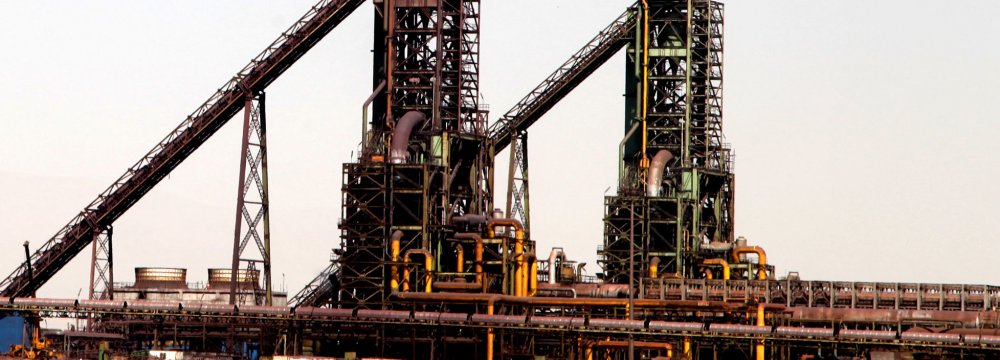Iran maintains its position as the world’s biggest direct reduced iron producer. World Steel Association’s latest data on DRI output for January-July period shows the Islamic Republic outperformed India, the world’s biggest DRI producer last year.
According to WSA, Iran produced 9.1 million tons of DRI over the reported period, increasing output by 6.1% year-on-year. The rise was driven by higher crude steel production as the majority of Iranian steelmakers use DRI as feedstock.
According to WSA, during the seven-month period, crude steel output in Iran climbed by 4.7% y-o-y to 10.1 million tons. Steelmakers were mainly supported by the government’s protectionist measures against imports of steel, a surge in exports and sporadic pick-ups of demand in the domestic market.
Iran first took over India after the release of the WSA’s DRI output for the month of March. World Steel Association’s production figures are based on data collected from 14 countries, which accounted for approximately 90% of the global DRI production in 2014.
India has reduced its DRI production because of the coal-based technology and related additional expenses that appeared after the government introduced environmental fees this financial year. As a result, Indian producers are switching to usage of alternative raw materials. The country’s seven-month DRI production was down 22.7% year-on-year to 8.2 million tons.
New Plant Goes Online
Kavir Damghan Steel Company was inaugurated in the presence of First Vice President Es’haq Jahangiri, and Minister of Industries, Mining and Trade, Mohammadreza Nemtazadeh on Thursday in the city of Damghan in Semnan Province, IRNA reported.
Built with a $71 million private sector investment, KADASCO has the capacity to produce 300,000 tons of DRI per year.
According to managing director, Mehdi Ranjbari, the company is planning to import the so-called Stelco-Lurgi/Republic Steel-National Lead (SL/RN) from India to reduce production costs and increase output.
Ranjbari says the new production method will enable KADASCO to forego investment in expanding pellet production while adding 200,000 tons to the plant’s DRI output capacity.
SL/RN process is the most widely used coal-base direct reduction process in the world. Its features include the ability to use a wide-range of ferrous materials such as lump iron ore, pellets, beach sand or ilmenite ore and solid carbon to produce DRI. SL/RN’s waste gas can also be recovered and reused through steam generation.
Earlier in February, a DRI production plant with annual production capacity of 1 million tons came on stream in Bardsir in the southeastern province of Kerman. Meanwhile, the direct-reduced iron plant in Neyriz Steel Complex will become operational in the second half of the current Iranian year (ends in March 2017), according to head of Iranian Mines and Mining Industries Development and Renovation Organization, Mehdi Karbasian.





